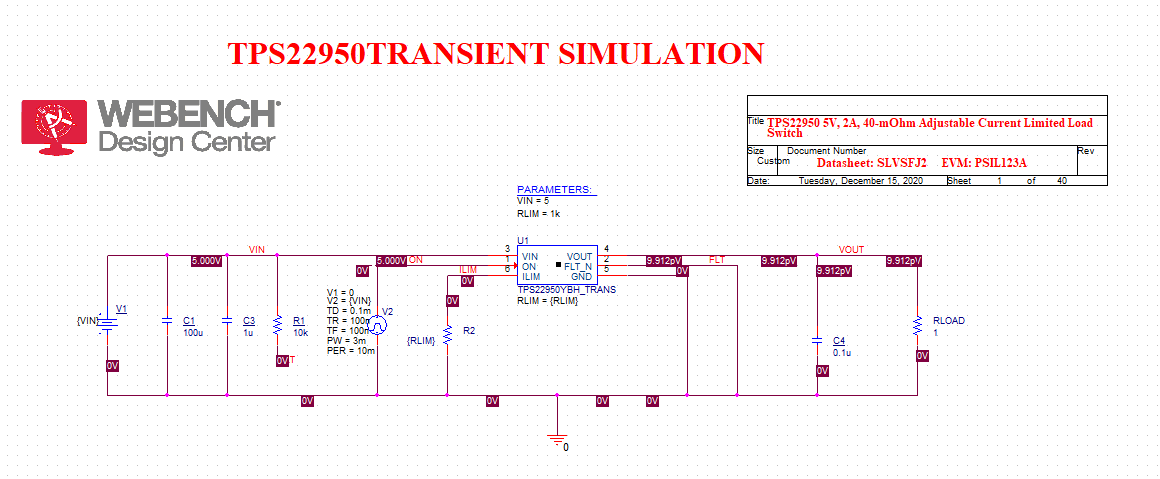Other Parts Discussed in Thread: TPS22950, TPS2595
Hello,
Not sure if I'm overlooking something simple in the datasheet, but I'm ultimately just trying to replicate the behavior found in Figure 9, the "Application Curves". Here with a load current of 3.3V/1Ohm = 3.3A, all I see at the output is ~500mV, and the FAULT_N line is still at 1V, despite the over-current condition. Note that R_LIM is set to 2.21k for a current-limit of 500mA, according to the datasheet.
V2 is mimicking a logic HIGH on a GPIO signal. I tried setting the current-limit explicitly through a 2.21k resistor, but that doesn't affect the simulation results in any way.
Any advice as to fixing this issue? Appreciate any help, thank you.





